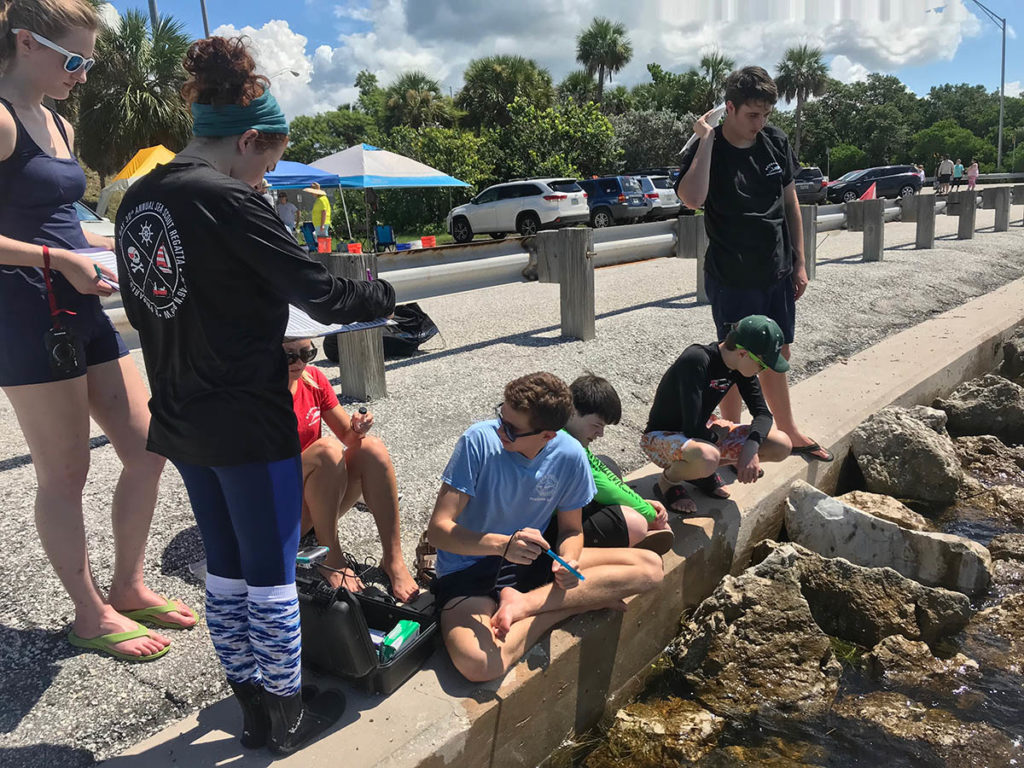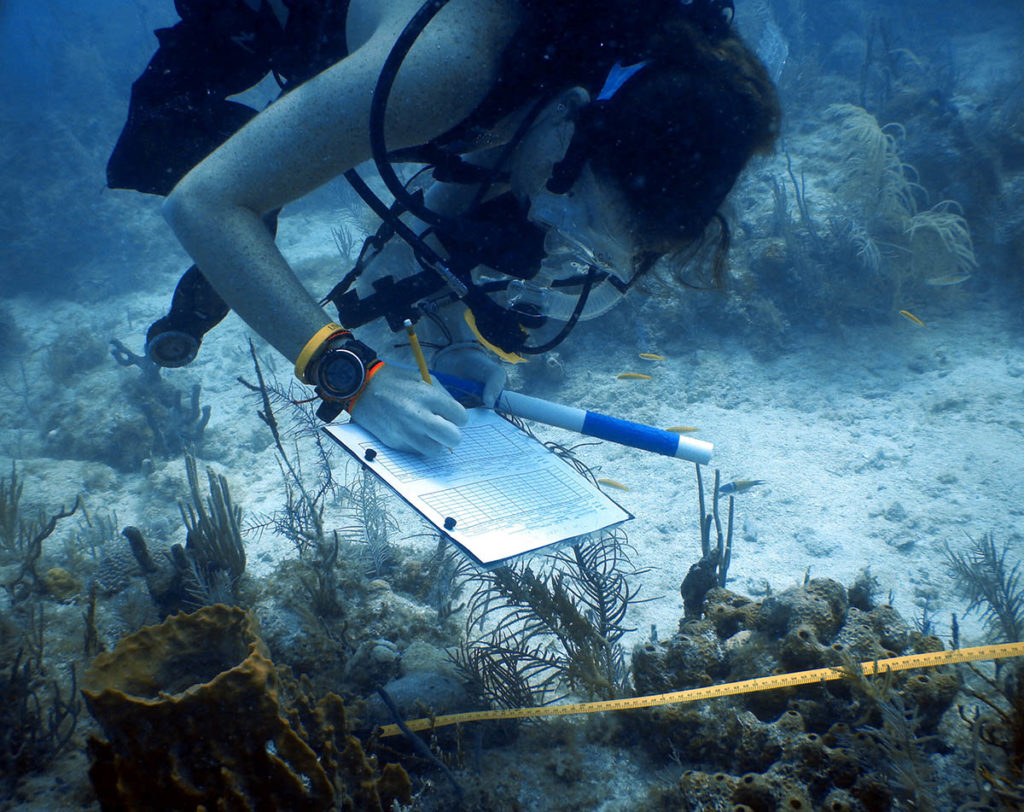
MasterNaut Projects
As Nauts build their knowledge and skills in diving, science and leadership, they move through a ranking system. The prestigious rank of MasterNaut recognizes elite students who have achieved their advanced, rescue and nitrox certifications; conducted more than 100 lifetime dives, including at least 60 scientific dives; performed 150 community service hours; and completed a large-scale conservation or research project.
The MasterNaut project is a keystone of this distinguished rank. Students propose a research or conservation project then work with Science Education volunteers to develop the methodology, train their peers, then execute the project. Each project culminates in a written paper and two presentations– one within SCUBAnauts to their peers, and one external. This encourages students to effectively communicate about science to a variety of audiences.
Projects range from dive physiology to coral disease to the creation of training materials for fellow students. Many students are able to obtain grant funding for their projects and some have even gotten job offers based on their work!
Ongoing projects include:
- How do marine protected areas impact fish populations and benthic communities?
- Does breathing gas (air vs. nitrox) impact post-dive fatigue?
- What temperature is ideal for coral growth in laboratory?
- Is scuba or snorkel a more effective method for surveying fish in the Florida Keys?
Vertical Oyster Garden Community Education and Outreach Programed
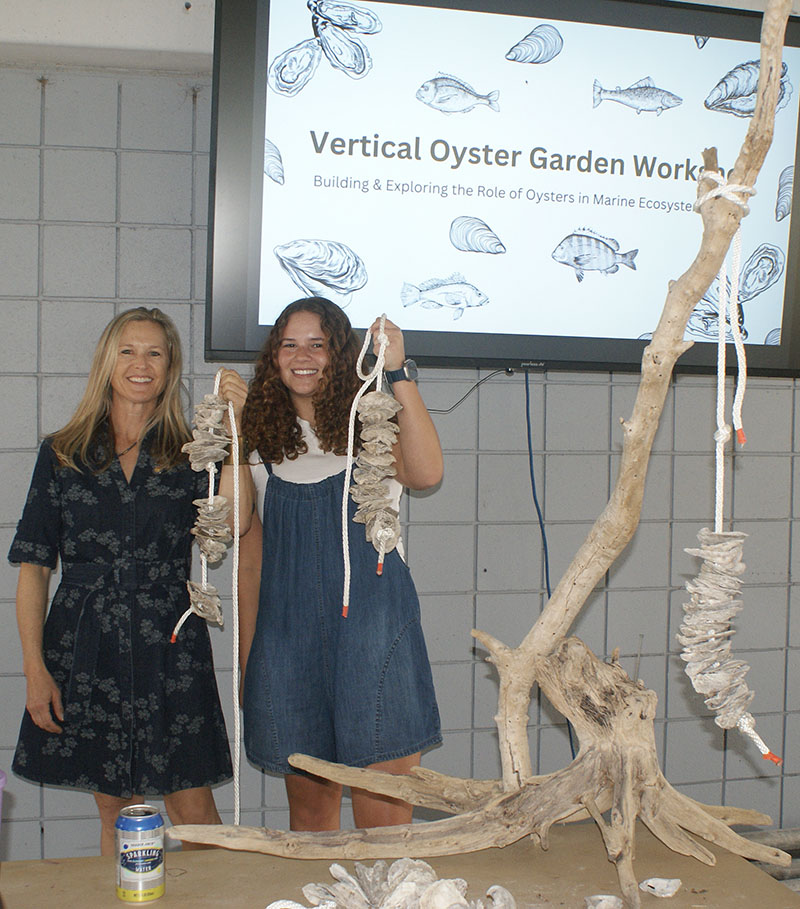 Madison Wurthner, 2025
Madison Wurthner, 2025
Coastal ecosystems are increasingly threatened by pollution, habitat loss, and climate change, prompting the need for innovative, community-driven restoration solutions. This study explores the use of Vertical Oyster Gardens (VOGs) as a tool for public engagement and environmental education through community-based outreach efforts. VOGs, constructed from recycled oyster shells suspended from docks, serve as effective, scalable habitat structures that support oyster population recovery and natural water filtration. This project involved planning and implementing a series of community outreach events across the Tampa Bay area, during which 555 participants constructed 100 VOGs using recycled materials. These events targeted diverse audiences—including students, families, and environmental organizations—through hands-on workshops and educational booths. Outcomes were measured by participation levels, VOG construction, and community feedback. Findings indicate that VOG-based outreach successfully increased public awareness, encouraged cross-organizational collaboration, and initiated early-stage conservation action. This work supports the broader adoption of VOGs as a cost-effective, accessible, and legally compliant strategy for building ecological resilience and community engagement in coastal restoration.
Coral Growth in Land-Based vs. Water-Based Nurseries
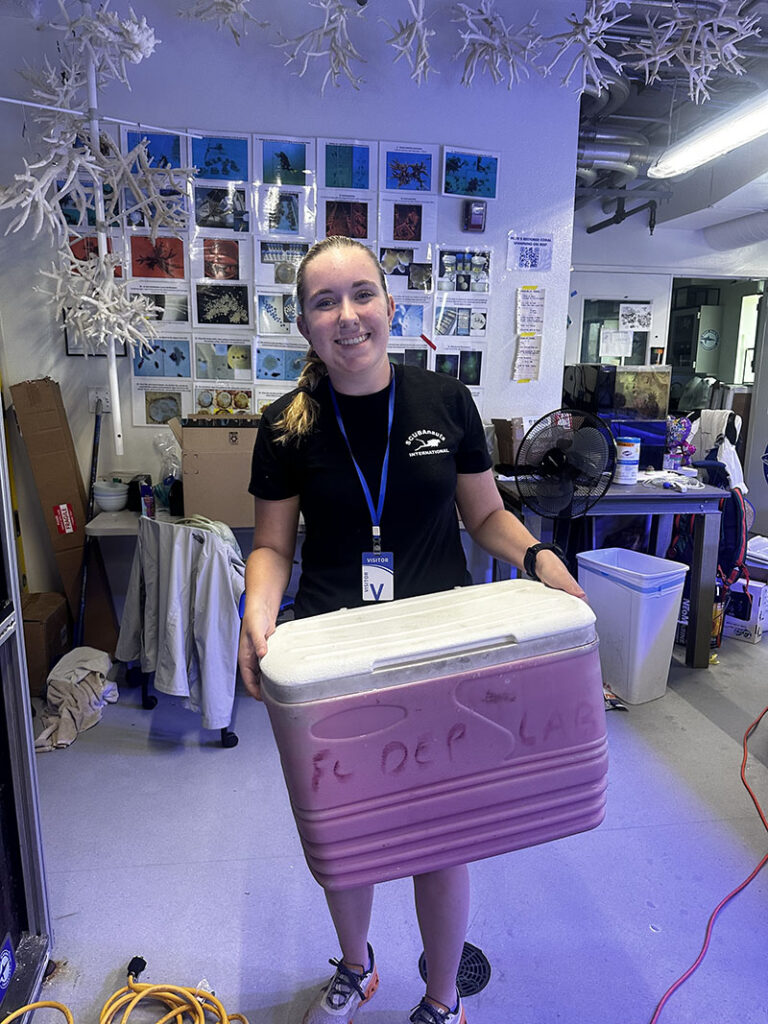 Brooklyn Butler, 2025
Brooklyn Butler, 2025
Corals are a vital part in the balance of the underwater ecosystem. With their slow growth rate and sensitivity to sudden and drastic changes, the reefs are slowly dying. By identifying if corals grow at a quicker rate in land-based nurseries (ex situ) or in water-based nurseries (in situ), colonies can slowly be restored. If restoration practitioners know where corals grow quicker, they can better manage their grow-out strategies. A faster grow-out allows for the corals to be outplanted earlier, all working together to restore the reef. This study was completed with four individual genotypes from four targeted parental crosses of Acropora cervicornis (Staghorn Coral, “ACER”). The data was collected by taking standardized photos on July 2, 2024 and October 14, 2024, (3 months and 12 days apart). The photos were analyzed using ImageJ to measure the change in surface area between time points and polyp height.
Results show that polyp height is greater in in situ nurseries whereas the corals surface area increases at a quicker rate in ex situ nurseries. The treatment location with higher growth rate is dependent on the parental cross. These results suggest that restoration practitioners should consider using a combination of ex situ and in situ nurseries depending on the parental cross to boost restoration efforts of A. cervicornis.
Icebergs as Climate Change Indicators
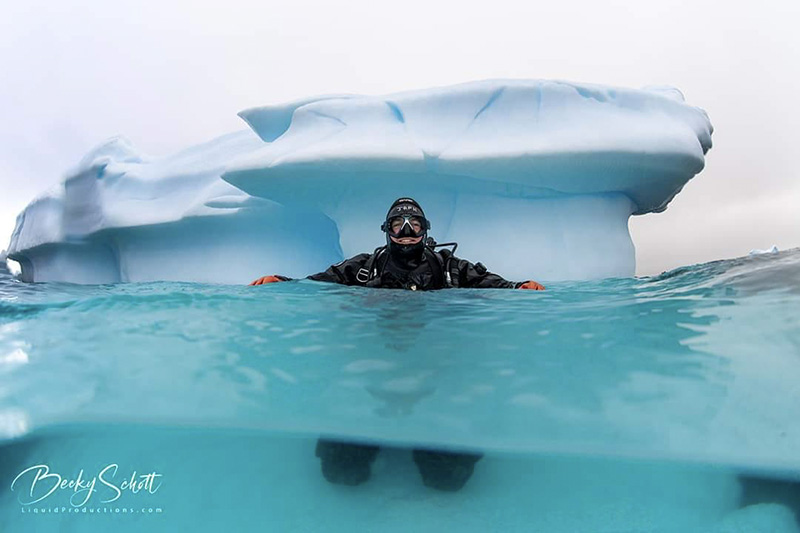
John Humphreys, 2025
This project aims to analyze the size, shape, and types of Antarctic icebergs to see if they can serve as an early warning sign of a regional change in temperature and thus a sign of climate warming. Due to the extraordinary costs associated with deploying and maintaining scientific instrumentation in the Antarctic, this study utilized volunteer iceberg surveyors to help determine if icebergs can be a cost-effective tool to identify early signs of warming temperatures. These volunteer ice surveyors took observations of over 250 icebergs on the west side of the Antarctic Peninsula. Pinnacle and Dry Dock icebergs were found most commonly in the warmer Northernmost region, whereas Tabular and Wedge icebergs were more commonly seen in the cooler Southernmost regions. Icebergs with a scalloped wavy texture were also found most commonly in the warmer Northernmost region, whereas a broken texture was found more common in the south. With these results in mind, future studies can more easily prioritize the northernmost region’s for continued measurements using advancing scientific equipment to expand understanding of climate warming in the Antarctic as a whole.
Octopus Storage Methods for Scientific Divers
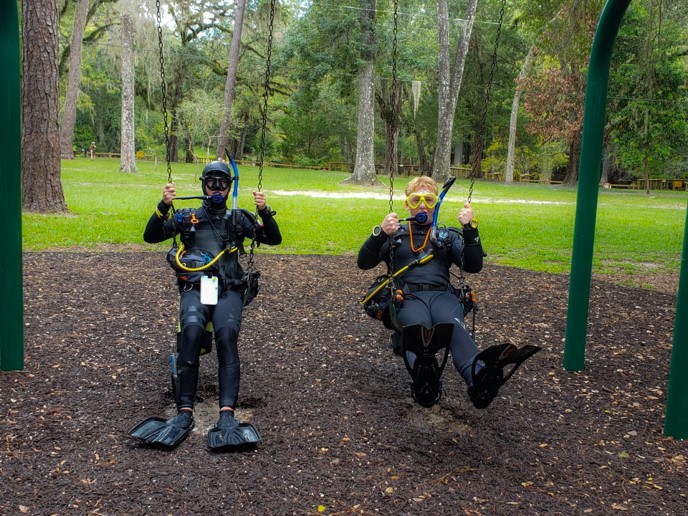
Hayden Ramsey, 2023
Safety and uniformity within scientific diving are considered paramount concerns. Divers store their secondary regulators in two different ways, via an octopus necklace or a quick release. The former is a necklace made of rubber or bungee which holds the octopus around the upper chest area of the diver, while the latter is a smaller rubber band that can be clipped onto a D-ring on the diver’s BCD. This project aimed to test the effectiveness of both storage methods, and the divers’ personal preferences and anecdotal experiences were surveyed while testing the methods underwater. The findings of the survey indicated that 65% of the divers preferred the octopus necklace method, citing it to be quicker and easier to find than the quick release method. Interestingly, some divers who preferred the quick release also cited this same reason. The study concluded that both storage methods are comparable in effectiveness, and it’s the small advantages or disadvantages in each method that divers might prefer or dislike, respectively. The study’s limitations were a small sample size and a lack of quantitative data, which could not prove the comparative effectiveness of both storage methods. To get more robust results in the future, a larger sample size of different diving styles (scientific, technical, recreational, etc.) can be considered to provide complete and quantitative analysis.
Analysis of The Gulf and Florida Coast Lionfish Population
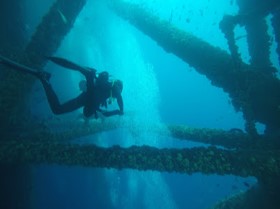 Trent W., Tarpon Springs Chapter, 2022
Trent W., Tarpon Springs Chapter, 2022
In order to gain a deeper understanding of the Gulf and Florida Coast lionfish population, this project analyzes the preferred habitat and conditions of various dive sites across the Gulf of Mexico, Texas Flower Gardens, and Florida Panhandle Coast. Research for this project was performed in the form of benthic surveys and roaming fish counts, both performed by the American Academy of Underwater Sciences divers using SCUBA. After analysis of data gathered, the conclusion can be made that Lionfish in the area thrive on man-made structures as opposed to naturally occurring reefs.
Oyster Feasibility Surveys
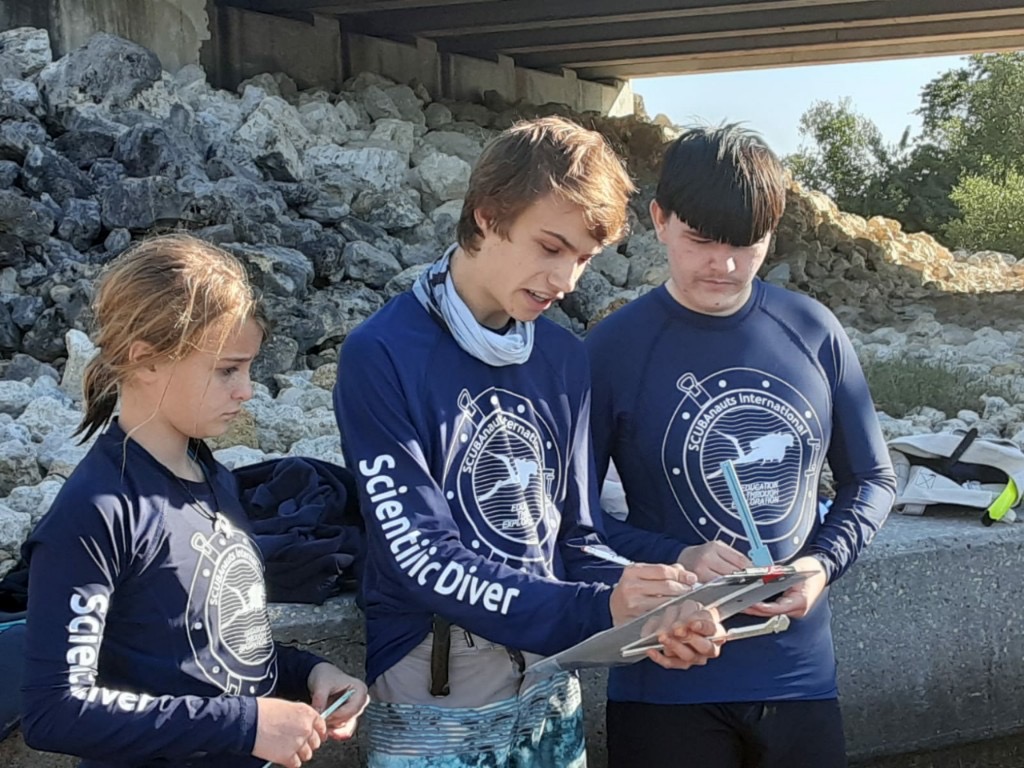 Zane S., St. Petersburg Chapter, 2022
Zane S., St. Petersburg Chapter, 2022
Oysters are vital in Tampa Bay, especially due to a huge loss in their population in the last 50 years. This project was based on assessing one area, three beds in total. The oyster bed surveys were conducted during December, January, March, and April of 2021. All the surveys took place at Perico Bayou in Robinson Preserve which is in Manatee County. There was a total of four surveys, two in winter and two in spring. The goal was to see if the oyster beds that were in Perico Bayou were viable. In order to assess the viability of the beds, the percent alive and dead plus shell length of Perico Bayou beds were compared with that of natural beds in Tampa Bay. Data were collected from four different oyster beds within the bayou throughout the year. According to the data, the average percentage of live oysters was about 32% and about 67% dead oysters. According to Gary Raulerson, who has a Ph.D. in Ecology and works for the Tampa Bay Estuary Program (TBEP), natural reefs have about 74% live oysters and about 25% dead oysters. Mr. Raulerson also stated that natural oyster beds have an average shell length of 4.0 cm, while the average for Perico Bayou surveys was 4.6 cm. The hypothesis for why there is a lower percentage alive in Perico Bayou is because of such a low flow of water through the bayou, they were exposed to the sun for too long, and their defecation accumulated. The reason for the larger than average shell length could be because the surviving oysters may be receiving more nutrients for themselves and not competing for those nutrients, over the natural beds with a higher percentage of live oysters. The data shows that Perico Bayou beds are likely not as viable as natural beds elsewhere in Tampa Bay.
Comparative Study of Seagrass Bed Habitat Along the Skyway Bridge
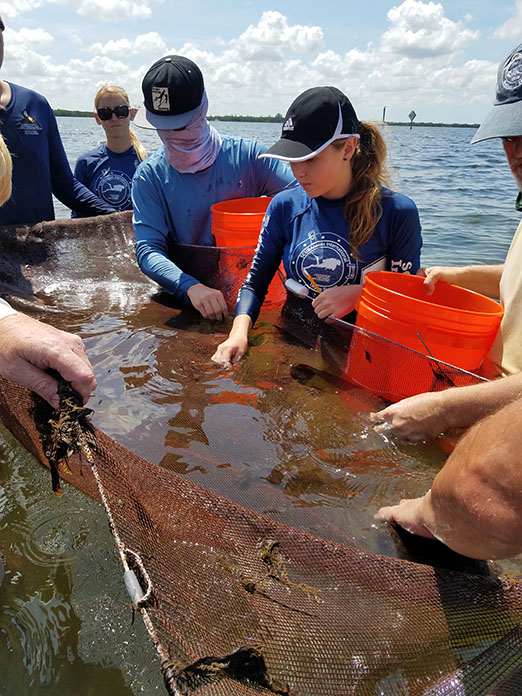 Diana P., St. Petersburg Chapter, 2020
Diana P., St. Petersburg Chapter, 2020
Seine nets, core samples, and roaming mollusk surveys were conducted in seagrass beds at three locations near the Skyway Bridge in St Petersburg, FL. The surveys were used to assess if the habitat in the mitigated seagrass bed was restored to the level of the habitat in the surrounding natural seagrass beds. The data set determined that the difference in richness and abundance of species found between the natural and mitigated sites was insignificant. Therefore, the habitat in the mitigated seagrass bed was successfully restored to the level of the surrounding natural seagrass beds. However, there were no living mollusks found in the roaming mollusk surveys, suggesting there could be a problem with the health of the habitat in all sites along the skyway bridge. Another concerning finding was that several mollusk species recorded at the site 10 years ago were not found, meaning the richness of mollusk species in the area has been decreasing since mitigation occurred.
The Implications of SCUBA diving with Air vs. Enriched-Air Nitrox on Mental and Physical Fatigue
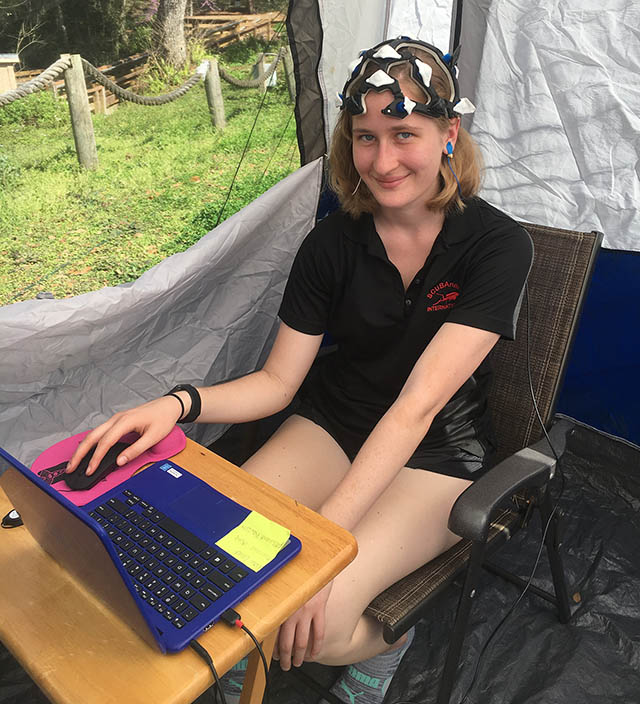 Emma Z., Tampa Chapter, 2019
Emma Z., Tampa Chapter, 2019
It is commonly “known” among SCUBA divers that breathing gas mixtures with an increased fraction of oxygen, called nitrox, reduces post-dive fatigue, however, little to no empirical data exists to support this claim. Those studies that have been conducted do not account for a placebo effect. This study aims to find whether the reported extra benefits of nitrox are due to the physical impact of the gas composition or a placebo effect that has permeated the SCUBA diving community.
Divers in a blind study breathed either a standard air mixture or a mixture of nitrox. Pre- and post-dive fatigue were measured using EEG brain scans and counter-movement jump tests. Analog self-evaluation surveys are also given pre- and post-dive to track subjective feelings of pain and gauge whether divers could consistently decipher what gas mixture they were breathing based on previous experience. Results indicate no statistically significant difference in post-dive fatigue between air and nitrox divers and most divers could not accurately determine which gas they were breathing.
A Comparative Study on Seagrass Coverage in Natural and Mitigated Sites in Tampa Bay, FL
This project received the Tampa Bay Estuary Program’s Golden Mangrove Award for best project awarded a TBEP Mini-Grant in 2018.
Zack M., St Petersburg Chapter, 2019
Seagrass coverage surveys were conducted at two locations along the South Skyway Bridge Rest Station during the fall to investigate growth over time of a released mitigation site and compare its most current coverage to a natural seagrass bed. Snorkeling surveys displayed that the mitigated site possessed slightly higher total vegetative cover than the natural seagrass bed. The released seagrass mitigation site had a coverage increase of 18.5 percent from 2011 to 2018, indicating seagrass mitigation efforts are indeed successful. Moving forward, it may prove useful to expand research to the other side of the Skyway Bridge to evaluate differences in seagrass species and coverage in the overall region.
A Practical Fish Identification Guide for the Florida Keys
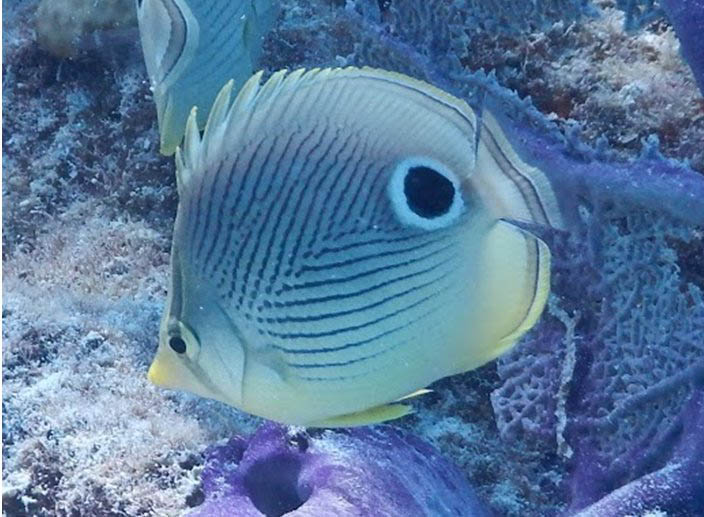
Vivian F., Tarpon Springs Chapter, 2019
SCUBAnauts have been conducting fish surveys in Florida and other areas of the Caribbean for more than 15 years. Each year, we spend a significant amount of time learning and practicing our fish ID in the classroom and in the field, but traditional field guides ignore a critical portion of this learning process. I decided to collect my own pictures and create a new field guide because I felt it is hard to translate what you see in a professionally done photograph into the field where the fish may seem different because of natural variation in visibility, light, coloration, and distance. One of my main goals in this project was to make this field guide open to the public, which is YOU. Please enjoy this website and blog I have created to help novice and intermediate fish surveyors improve their skills!
Palythoa Abundance in Relation to Depth
Mia F., Tarpon Springs Chapter, 2018
Palythoa abundance and coverage was quantified in June of 2017 at six different dive sites to research the hypothesis that Palythoa cover decreases with depth. Surveys conducted at Looe Key reef balls 12, 19, 20, 25, 33, and 34 showed that there was a small negative correlation between depth and Palythoa abundance as well as a strong negative correlation between depth and Palythoa coverage (as depth increased, Palythoa abundance and coverage decreased). Aproximately, 58% of average area of Palythoa coverage per transect was explained by the average depth per transect. Approximately 29% of the number of Palythoa colonies were explained by depth. When continuing this research, methodology should be revised to prevent errors in data.
Phytoplankton’s Effect on Fish Populations
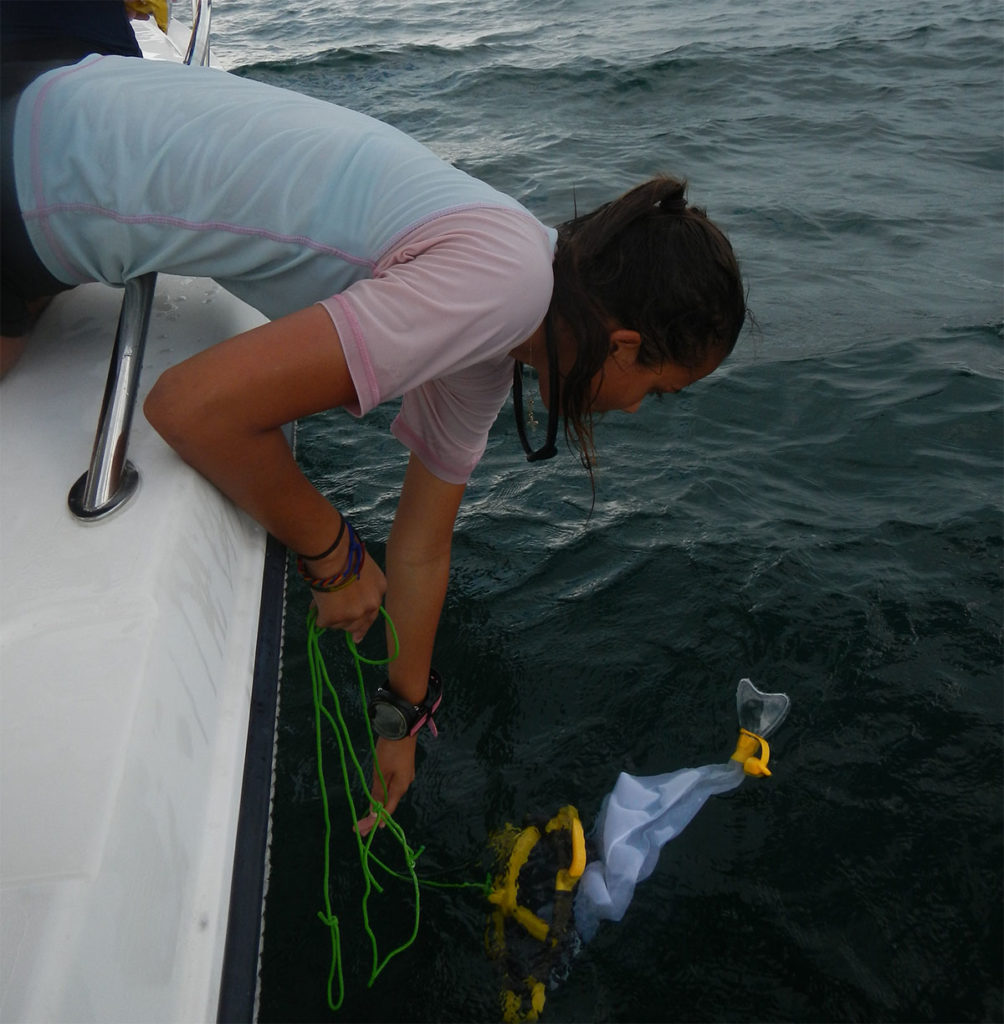
Shaian B., Tampa Chapter, 2017
Plankton and fish surveys were conducted at four different artificial reef sites off the coast of Florida during summer and fall to investigate potential correlation between phytoplankton and fish populations on the Gulf Coast. Surveys at Treasure Island Reef, St. Petersburg Reef, Veterans Reef, and Dunedin Reef showed that there was a positive correlation between the amount of plankton and number of fish. Greater numbers of plankton and fish were observed in summer than during fall. Treasure Island Reef exhibited the greatest numbers of both fish and plankton. Of feeding types, the strongest positive correlation existed between the number of plankton and omnivorous feeders.

